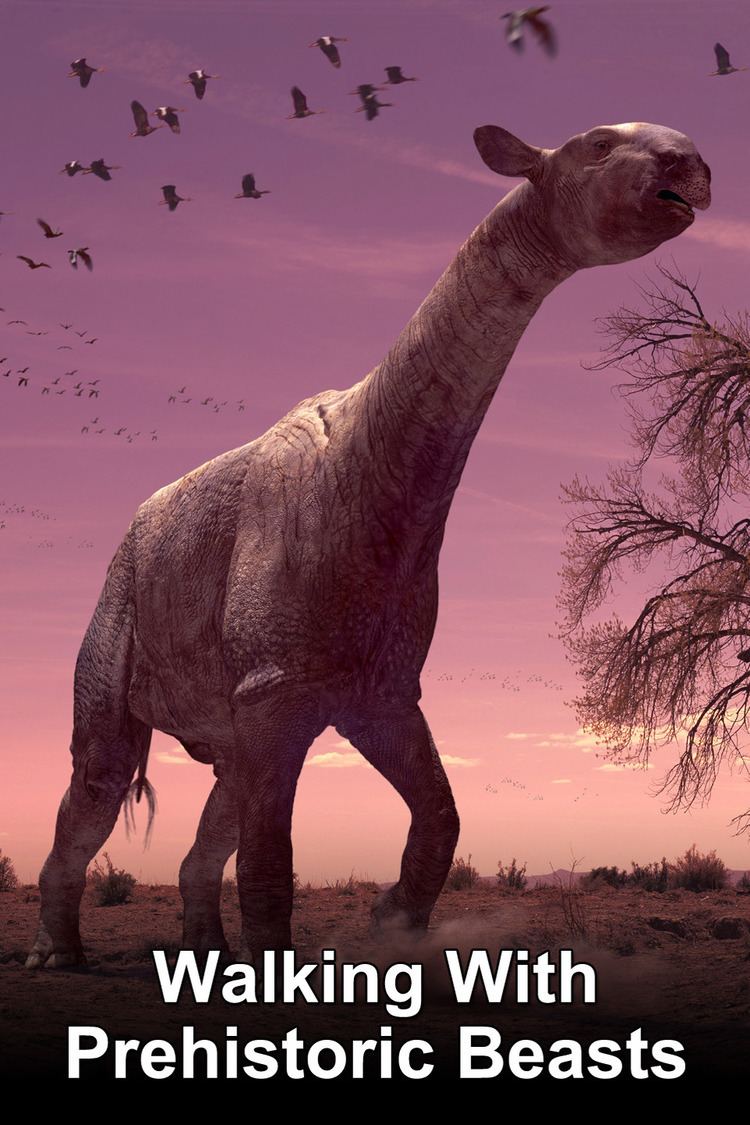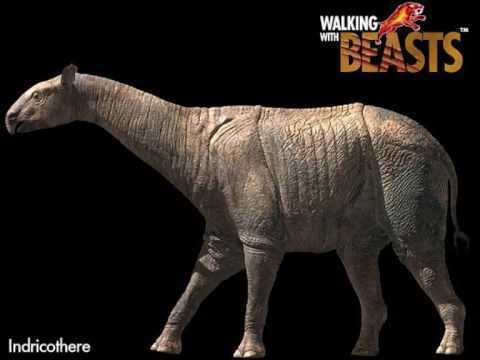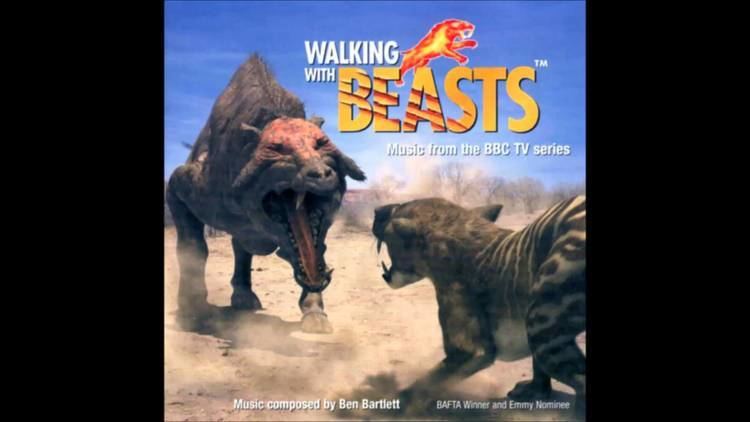8 /10 1 Votes
7.6/10 TV Creative director(s) Mike Milne Final episode date 20 December 2001 | 8.3/10 IMDb Developed by Andrew Wilks First episode date 15 November 2001 Genre Television documentary | |||||||||||||||||||||||||||||||||
 | ||||||||||||||||||||||||||||||||||
Also known as 'Walking with Prehistoric Beasts' Created by Tim HainesJasper JamesAndrew Wilks Written by Kate BartlettJasper JamesMichael OlmertNigel Paterson Directed by Jasper JamesNigel Paterson Similar Walking with Monsters, Walking with Cavemen, Walking with Dinosaurs, Sea Monsters, Prehistoric Planet | ||||||||||||||||||||||||||||||||||
Walking with Beasts (Walking with Prehistoric Beasts in North American releases) is a 2001 six-part television documentary miniseries, produced by the BBC Natural History Unit. It is the second installment of the Walking With... series and a sequel to Walking with Dinosaurs. Beasts takes place after the extinction of the dinosaurs 65 million years ago depicted in Walking with Dinosaurs, and recreates animals of the Cenozoic with computer-generated imagery and animatronics. Like Dinosaurs, its narrative is presented in the style of a traditional nature documentary. Some of the concepts it illustrates are the evolution of whales, horses, and humans.
Contents

In North America, Beasts was broadcast on the Discovery Channel with Stockard Channing replacing Kenneth Branagh as the narrator. It would later be re-edited and re-narrated for the second season of Prehistoric Planet for the Discovery Kids lineup.

Production

Producer Tim Haines wanted to create a sequel to Walking with Dinosaurs so the general public could discover the fascinating mammals of the Cenozoic, which were less represented in popular culture than dinosaurs.

As with Walking with Dinosaurs, the film crews would go to locations that matched the depicted time periods fairly closely and shoot either empty landscapes (when the animals would be created later with CGI) or animatronic animals for close-ups. Sometimes it was necessary to replicate the impact the animated animals would have on their environment—such as footprints left in the snow by a woolly mammoth. The animatronics' broad movements were controlled by puppeteers, while their more subtle movements were remote-controlled and operated via servo motors.

The visual effects budget was around 7 or 8 million dollars, much lower than a feature film of the time. Tim Haines attributed this to solid planning. The fur coats and moving parts of mammals made the creatures in Beasts more challenging to animate than the scaly reptiles of Walking with Dinosaurs. Short fur was animated with tricks, and long shaggy coats (like the woolly mammoth's) with fur shaders.
Live actors were used for the anatomically modern humans and Neanderthals in "Mammoth Journey". In "Next of Kin", extreme close-ups of Australopithecus also employed actors wearing prosthetics.
"Sabre Tooth" was shot in Brazil, where Smilodon actually roamed. Filming of the ice age landscapes for the final episode took place in Canada's Yukon Territory.
Release
Walking with Beasts was originally broadcast in the United Kingdom on the BBC1 from 12 November to 21 December 2001. In North America, it aired in December on the Discovery Channel. The UK broadcast was the first non-sports BBC interactive programme. Beasts was released on VHS on 26 November 2001. A DVD release came the next year on 12 February for North America (as Walking with Prehistoric Beasts) and 8 April in the United Kingdom. The North American release restores the original narration by Kenneth Branagh. The DVD contains several special features: two 50-minute documentaries on prehistoric life, "Triumph of the Beasts" (about Cenozoic life at large) and "The Beasts Within" (which focuses on the humans and primates in the show); interviews with Tim Haines; animated storyboards; a photo gallery; and several fact files on the animals featured in the series. This edition was bundled with The Complete Walking with... Collection which came out on 23 July 2002.
A re-edited and re-narrated version of Beasts was presented as the second season of Prehistoric Planet, a Discovery Kids programme intended for a younger audience than Walking with...
Promotion
Beasts was promoted with a breakfast cereal tie-in from Kellogg's and the video game Walking with Beasts: Operation Salvage for Windows PCs. The soundtrack by Ben Bartlett was released on CD. An exhibition took place at the Herbert Art Gallery and Museum.
Reception
The first episode of Walking with Beasts attracted an audience of 8.5 million, 35 per cent of television viewers at that time.
Critics generally enjoyed Walking with Beasts. However, there were some complaints about overbearing narration and disappointing visual effects.
Companion book
A companion book was written by Tim Haines to accompany the first screening of the series in 2001. As with Walking with Dinosaurs, the written version of Walking With Beasts elaborated on the background for each story, went further in explaining the science on which much of the programme as based, and included descriptions of several animals not identified or featured in the series.
Scientific accuracy
In the first episode, the Gastornis are depicted as carnivorous predators, which is in agreement with their perception at the time as "terror birds." However, in 2013, a scientific study found that the bird was in fact either omnivorous or a herbivore. Ambulocetus is depicted as amphibious; later studies suggest that it was fully aquatic.
In the fifth episode, the Phorusrhacos are said to have lived alongside Smilodon populator and all other South American mammals, but they died out 10.5 million years before S. populator even appeared.
Awards
The series won an Emmy Award for Outstanding Animated Program.
